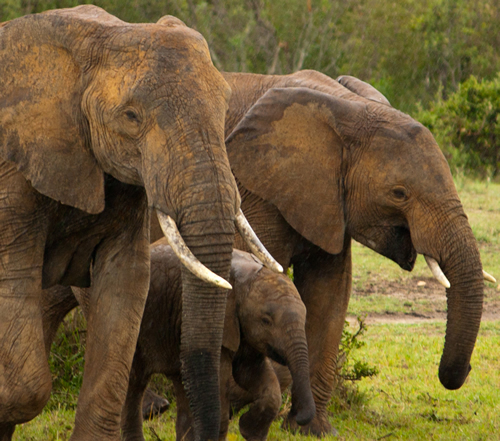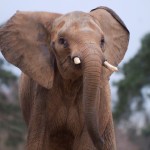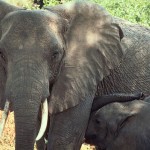
Amidst the massacre of at least 30 elephants in southwestern Chad, a pro-trade ivory report was again on the agenda at the 62nd CITES Standing Committee meeting in Geneva.
The slaughter occurred under the cover of darkness, in the early morning hours of July 24th.
Dr. Laurel Neme wrote on Mongabay.com that members of the organization SOS Elephants — Chad’s only NGO dedicated to elephants — counted 28 bodies, but had to stop because the killers were still close by. Most of the dead elephants’ tusks were missing.
Stephanie Vergniault, president of SOS Elephants said via Mongabay.com that the elephant slaughter is likely connected to a business deal between the China National Petroleum Corporation (CNPC) and the Chad government (the state firm Société des Hydrocarbures du Tchad, SHT).
Vergniault suspects the massacre was carried out by Chadians who are part of a local “ivory mafia” that is “backed by some officials” and makes “dirty deals with the Chinese labor” at the oil refinery.
The tragedy left a three-week-old elephant orphaned, and he has been rescued by SOS Elephants.
But in Geneva, a team of consultants hoped to gain support for their “Decision-Making Mechanisms and Necessary Conditions for a Future Trade in African Elephant Ivory” — an attempt to expand the market for ivory.
The authors argue that “ivory is produced” when elephants die and that ivory is a commodity that should be traded in a manner that is modeled after the De Beers system for diamonds. They claim that a “Central Ivory Selling Organization” would be different from De Beers, however, because “De Beers’ sole aim was to maximise the income from diamonds” while the Central Ivory Selling Organization’s objective would be “to obtain the best possible returns for the primary stakeholders and to gain control of the market”. Indeed, the difference is subtle — if it exists at all.
Mary Rice, Executive Director of the Environmental Investigation Agency (EIA), explained that continued discussion of legal ivory sales “will further stimulate the ivory market” and she questions the motives of the pro-trade report.
The consultants behind this report are seeking to put in place a mechanism for decision-making without providing or discussing vital information such as the ecological sustainability of an international ivory trade, the impact of such a trade on illegal killing, enforcement challenges and linkages between legal and illegal trade.
EIA has been investigating the illegal ivory trade for more than 20 years, and recommends that the CITES Standing Committee “reject any further proposals from any Party for ivory sales under CITES”.
Learn more:
Image by Siddharth Maheshwari via Wikimedia Commons




